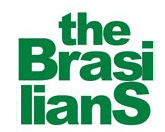Hypertension (high blood pressure) is when the pressure in your blood vessels is too high (140/90 mmHg or higher). It is common but can be serious if not treated.
People with high blood pressure may not feel symptoms. The only way to know is to get your blood pressure checked.
Blood pressure is written as two numbers. The first (systolic) number represents the pressure in blood vessels when the heart contracts or beats. The second (diastolic) number represents the pressure in the vessels when the heart rests between beats.
Hypertension is diagnosed if, when it is measured on two different days, the systolic blood pressure readings on both days is ≥140 mmHg and/or the diastolic blood pressure readings on both days is ≥90 mmHg.
Key facts
An estimated 1.28 billion adults aged 30–79 years worldwide have hypertension, most (two-thirds) living in low- and middle-income countries
An estimated 46% of adults with hypertension are unaware that they have the condition.
Less than half of adults (42%) with hypertension are diagnosed and treated.
Approximately 1 in 5 adults (21%) with hypertension have it under control.
Hypertension is a major cause of premature death worldwide.
One of the global targets for noncommunicable diseases is to reduce the prevalence of hypertension by 33% between 2010 and 2030.
Risk factors
Modifiable risk factors include unhealthy diets (excessive salt consumption, a diet high in saturated fat and trans fats, low intake of fruits and vegetables), physical inactivity, consumption of tobacco and alcohol, and being overweight or obese. In addition, there are environmental risk factors for hypertension and associated diseases, where air pollution is the most significant.
Non-modifiable risk factors include a family history of hypertension, age over 65 years and co-existing diseases such as diabetes or kidney disease.
Symptoms
Most people with hypertension don’t feel any symptoms. Very high blood pressures can cause headaches, blurred vision, chest pain and other symptoms.
Checking your blood pressure is the best way to know if you have high blood pressure. If hypertension isn’t treated, it can cause other health conditions like kidney disease, heart disease and stroke.
People with very high blood pressure (usually 180/120 or higher) can experience symptoms including:
• Severe headaches
• Chest pain
• Dizziness
• Difficulty breathing
• Nausea
• Vomiting
• Blurred vision or other vision changes
• Anxiety
• Confusion
• Buzzing in the ears
• Nosebleeds
• Abnormal heart rhythm
Prevention
Lifestyle changes can help lower high blood pressure and can help anyone with hypertension. Many who make these changes will still need to take medicine.
These lifestyle changes can help prevent and lower high blood pressure.
Do:
• Eat more vegetables and fruits.
• Sit less.
• Be more physically active, which can include walking, running, swimming, dancing or activities that build strength, like lifting weights.
• Get at least 150 minutes per week of moderate-intensity aerobic activity or 75 minutes per week of vigorous aerobic activity.
• Do strength building exercises 2 or more days each week.
• Lose weight if you’re overweight or obese.
• Take medicines as prescribed by your health care professional.
• Keep appointments with your health care professional.
Don’t:
• Eat too much salty food (try to stay under 2 grams per day)
• Eat foods high in saturated or trans fats
• Smoke or use tobacco
• Drink too much alcohol (1 drink daily max for women, 2 for men)
• Miss medication.
• Reducing hypertension prevents heart attack, stroke and kidney damage, as well as other health problems.
Source: WHO


